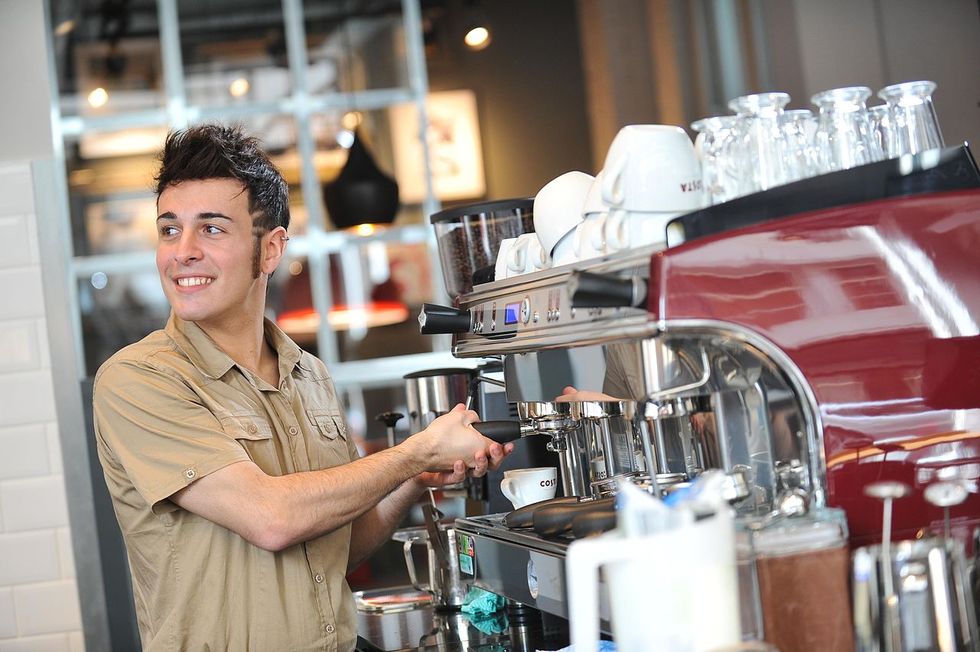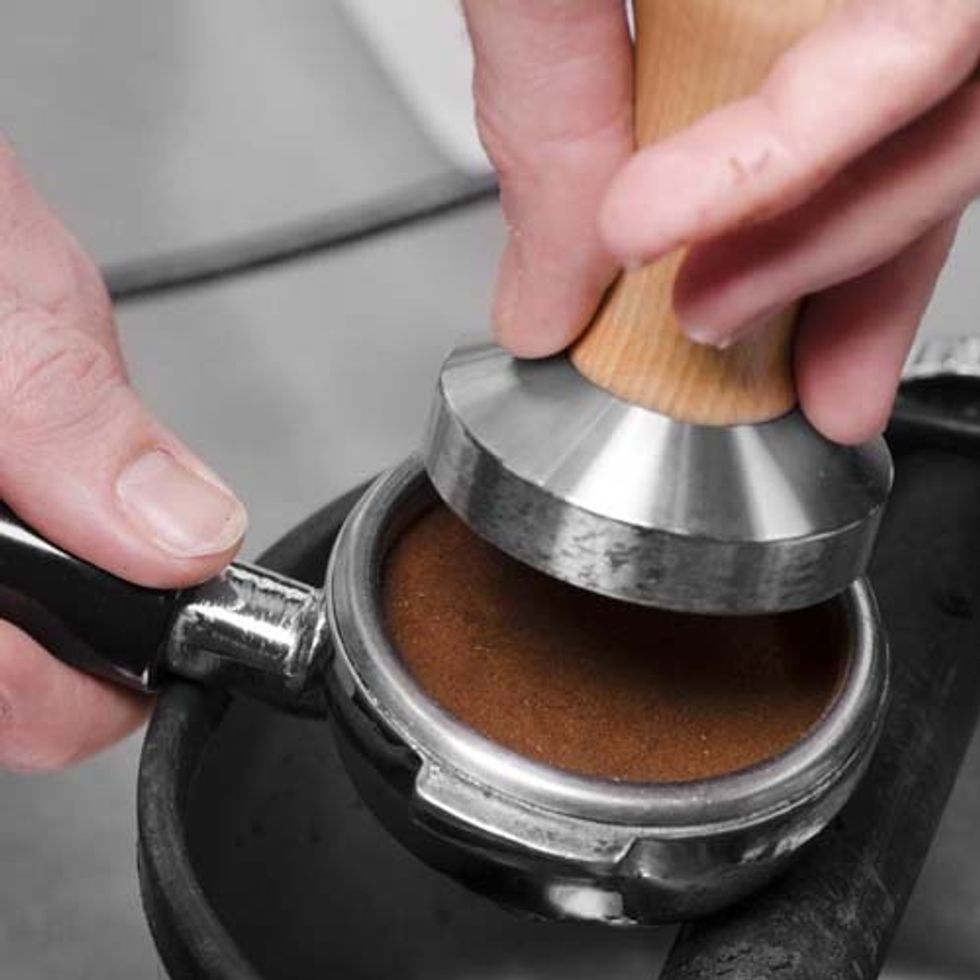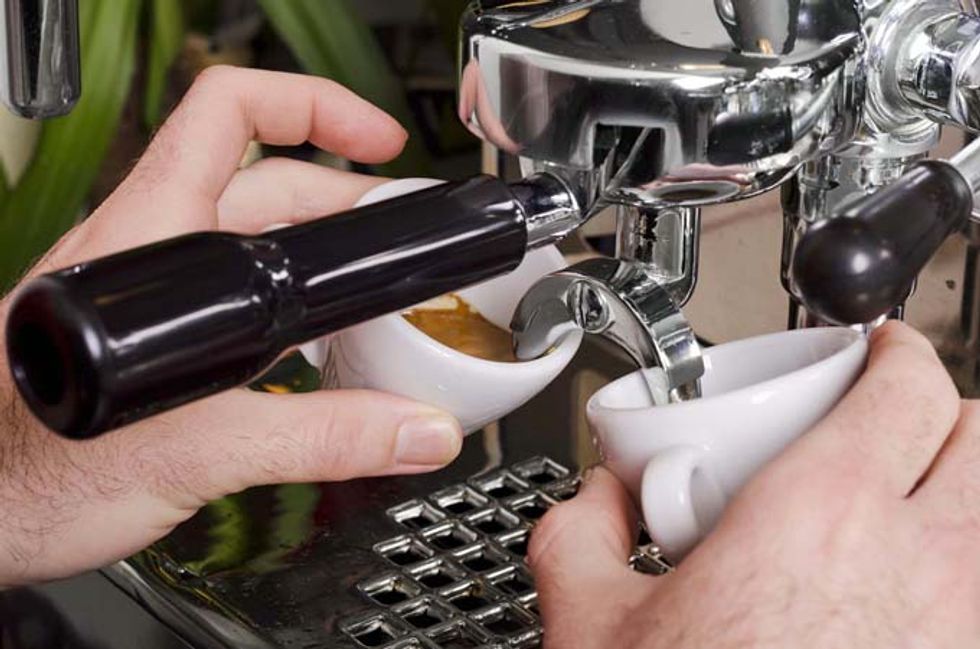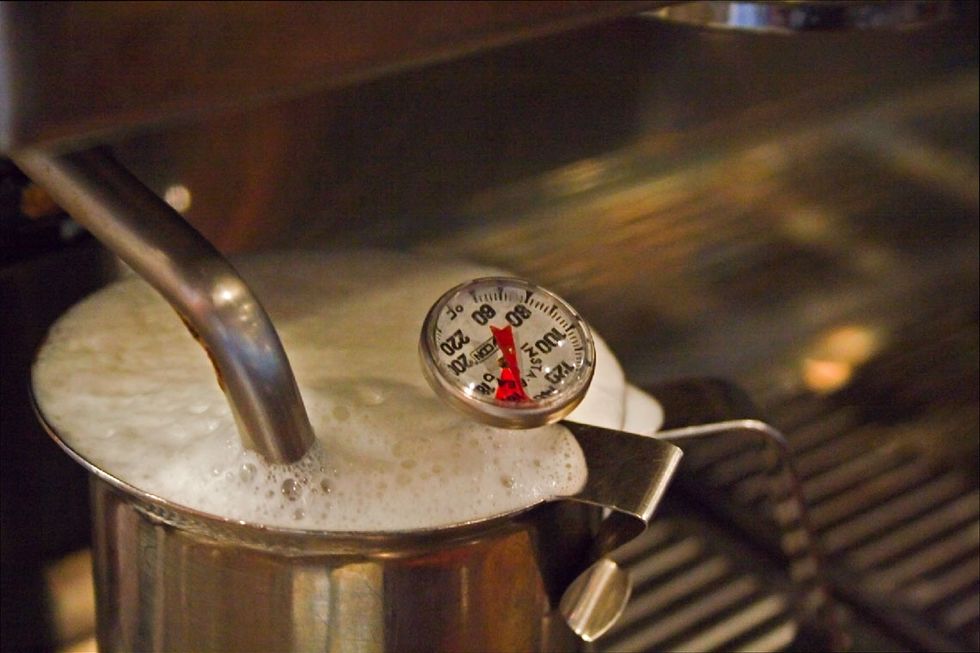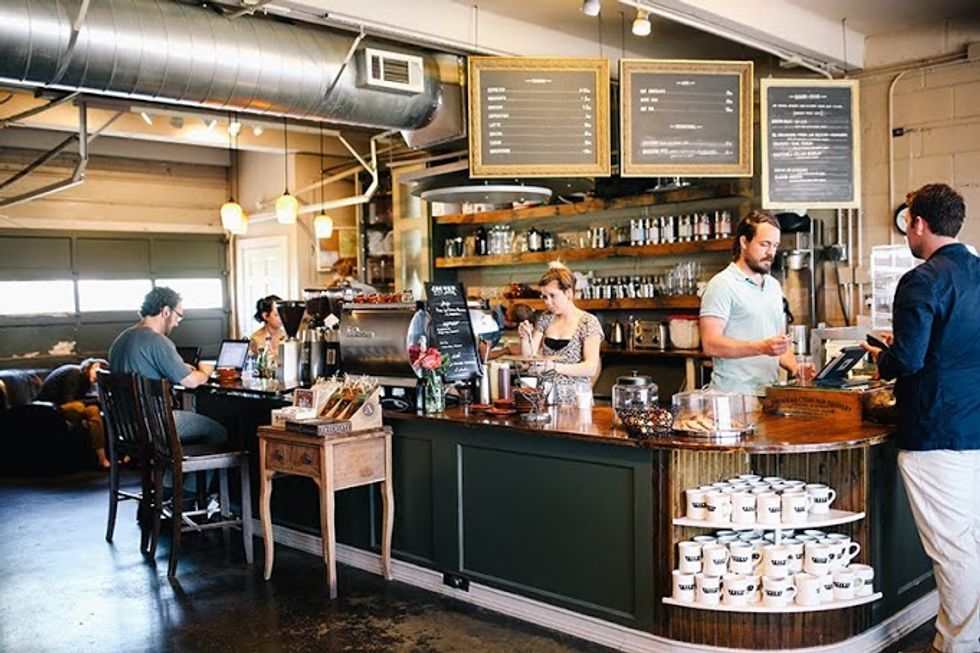I have been drinking coffee since middle school, but always just straight black drip coffee. Fresh ground Colombian was all I needed. Since I have gone to college and coffee shops are closer to me, I have branched out to try a new specialty drink here and there, but drip coffee has always been my standard. This week I started my new job as a barista at a local coffee shop. I have learned a lot in the first few days of training. It has been overwhelming to learn all that goes into making a high end cup of coffee. Here are 11 things I have discovered that you will need to know if you want to work at a coffee shop.
1. Espresso beans and coffee beans are not the same thing.
Not even remotely. Don’t be like me and dump and Guatemalan roasted coffee beans into the espresso grinder. They look the same, but believe me they are not. You’ll have to scramble to get them back out. There are very different roasts used to make espresso beans.
2. Espresso must be tamped into the filter with very specific pressure.
One you put the ground espresso in the metal portafilter, you must level it, brush any stray grounds off the sides and tamp the espresso with exactly 45 pounds of pressure so it is level. I don’t know what will happen if it is not tamped correctly. I only know that is law.
3. You don’t brew espresso, you “pull a shot.”
Don’t ask me what that means, either. All I know is that it should take 18-23 seconds, and you must never let a shot sit before serving the drink. The grind of the beans affects how long it takes.
4. There are different grinds for different types of coffee.
For drip brewing, you use a fairly coarse grind. French presses should be even coarser. Espresso is ground very finely. For every method of brewing there is a different grind.
5. Steaming milk requires highly developed skills of estimation.
You have to use a chilled pitcher and estimate the right amount of milk for the drink. If you don’t use enough milk, you’ll run out and have to start over. This is very time consuming and you’ll get behind. If you use too much milk, it will foam over your pitcher onto the counter and make one heck of a mess to clean up.
6. Milk must be steamed to a very specific temperature.
150 degrees Fahrenheit, to be exact. You quickly shut of the steam when it reaches this temperature and then let it sit until the temperature rises to 160 degrees. I can’t say why it continues to rise. That is a mystery.
7. The milk should make a very specific sound.
If you do not submerge the steam wand deep enough into the milk, it will make a high pitched screaming sound. This is caused by air getting into the milk and makes a lot of foam. That’s okay for cappuccinos, but it’s not the best for other drinks. A slurping sound is optimal. Enough air gets in to make some foam, but not too much foam.
8. Every drink has its own proportion of steamed milk to milk foam.
What’s the difference between a latte and a cappuccino? Foam. A cappuccino is mostly foam whereas a latte is mostly steamed milk. People are often surprised about the amount of foam that comes with a cappuccino and complain. Know your drinks, people.
9. People do not know the real name of the drink they want.
People from out of town come in and ask for something straight off the Starbucks menu like a Venti Iced Caramel Macchiato. You have to learn how to translate Starbucks speak into something the rest of the world understands. This still confuses me. I always get help from the former Starbucks barista. And god help you if you guessed wrong because someone will not be happy.
10. People are either in an extreme rush or in no rush at all.
There is no in between. Customers either fly into the parking lot like they’re being chased, order their drinks without responding to your greeting, and insist they need their drinks immediately, or they sit down with a newspaper or talk to other regulars and seem almost surprised when you do bring your drink out to them. These customers sit in the lobby for hours.
11. All the other baristas will know the regular customers by name.
They can tell you exactly what each person will order based on variables like the weather and time of day. They have memorized special requests and habits. Do not be intimidated. The regulars are generally very forgiving. You’ll get to know them. Just remember that they’ll be around, so you should make an effort to get on their good sides.

